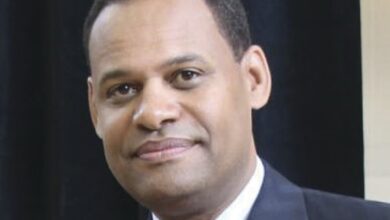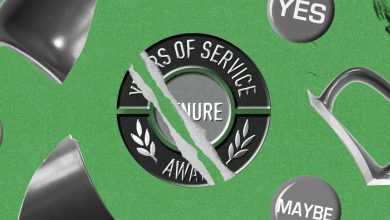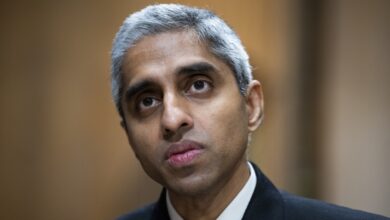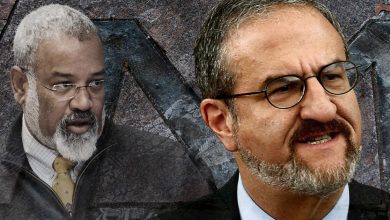Do Students Self-Censor? Here’s What the Data Tell Us
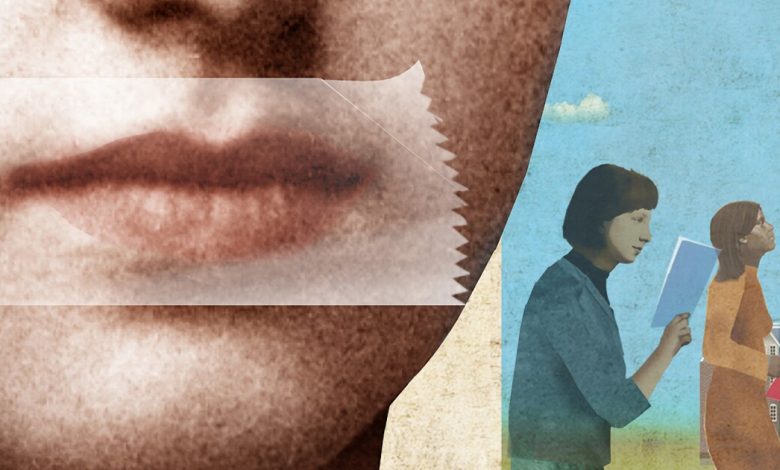
[ad_1]
On Monday, it felt like everyone in higher ed had an opinion about a University of Virginia senior’s opinion essay in The New York Times. Emma Camp argues in the piece that students are censoring themselves in classes, on campuses, and online — and that the problem is pervasive.
Camp’s essay kindled the latest flare-up in a contentious, seemingly endless debate about whether college students feel free to express their opinions. Many academics suggested that Camp’s account lacked nuance and that she was merely complaining because her peers didn’t agree with her. Some were more guarded, saying that they didn’t want to dunk on a student but that her argument was nonetheless flawed. A few agreed with the grim picture she painted.
Is self-censorship on campus the crisis Camp makes it out to be? The data show it’s more complicated than that.
In surveys, there’s some evidence that students are worried about how their beliefs will be viewed by their peers. Yet there’s also evidence that most students, across all political affiliations, feel encouraged by their institutions to speak freely and have never experienced discrimination based on their beliefs. In those surveys, a higher proportion of students of color report feeling unsafe on campus because of others’ speech.
Camp describes a campus climate where she feels ostracized by her peers because of her opinions. For her, most students seem to be holding themselves back from saying what they really think and that even as a “liberal who has attended abortion rights protests and written about standing up to racism,” she is discouraged from fully speaking her mind.
A 2020 survey by the Foundation for Individual Rights in Education — where Camp has been an intern — and College Pulse stoked fears that students were growing increasingly afraid of what others would think. The groups surveyed nearly 20,000 college students and found that, among all respondents, 60 percent felt they had to keep some opinions to themselves for fear of how they would be received. That includes 75 percent of students who identified themselves as “strong Republicans” and 63 percent of Black students.
But other surveys complicate that picture.
I want my students to test their own views against the views of other people to get a sense of when they may be wrong, and more importantly, when they can feel pretty strongly that they are right.
Jay D. Aronson, professor, Carnegie Mellon U.
In 2020, the Higher Education Research Institute at the University of California at Los Angeles found that at least eight out of 10 students from each ideological group — far left, liberal, middle of the road, and conservative — either agreed or strongly agreed that their institutions encouraged them to have a voice and share ideas openly.
According to the report, about three-quarters of far-right students reported “never” to have experienced discrimination with respect to their political beliefs; roughly two-thirds of conservatives and over 80 percent of middle-of-the-road students reported the same. Similarly, roughly 80 percent of the far-left and liberal groups reported never to have experienced discrimination or been excluded from activities because of their political beliefs.
Meanwhile, a survey published in January by the Knight Foundation found that 90 percent of white students and 82 percent of Hispanic students believed the First Amendment protected people like them, a stark contrast to the 51 percent of Black students who felt the same way.
The survey report also stated that a significantly higher proportion of Black and Hispanic students said they felt unsafe on campus because of others’ speech. About 20 percent of Black and Hispanic students reported feeling unsafe on campus because of something someone said about their identities, while just 14 percent of white students felt the same way.
Jay D. Aronson, a professor of science, technology, and society and the founder and director of the Center for Human Rights Science at Carnegie Mellon University, wrote in an email to The Chronicle that he is more concerned about the marginalized people who “are far more restricted in what they can say or do on college campuses because they lack power and access to resources in the event that there is any sort of retaliation against them.”
Sigal Ben-Porath, a professor of education, philosophy, and political science at the University of Pennsylvania, says the topic of student self-censorship is more reflective of problems within society than institutional issues.
“The argument is that students broadly feel silenced by their institutions,” she says. “And I actually think that’s inaccurate.”
She says that while there are counter examples to everything, “the vast majority of colleges and universities have a very strong commitment to open expression.”
Ben-Porath says aspects of self-censorship that often have nothing to do with political affiliation disproportionately affect minority students.
For example, low-income students might be more likely to hide some aspects of their lives in front of their more affluent peers. Minority students at predominantly white institutions might also feel the need to change the way they present themselves, reconsidering aspects of their views, experiences, and identities to appear more “acceptable” to their peers, Ben-Porath says.
Elizabeth Niehaus, an associate professor of educational administration at the University of Nebraska at Lincoln, used a combination of surveys and in-depth interviews to explore whether self-censorship exists and why, how, and when students choose to self-censor. She intentionally conducted interviews with white students at predominantly white institutions. She found that most students have different behaviors based on different circumstances when it comes to voicing their opinions on campus.
Neihaus also found a disconnect between how students answer survey questions and what they actually experience. Her research also showed that not all students see the benefit of engaging in challenging classroom discussions. Many free-speech advocates think differently.
For Aronson, of Carnegie Mellon, the most egregious efforts to limit free speech are those occurring in states where governors and legislatures are trying to dictate what can and cannot be taught in schools. New laws that seek to limit the discussion of critical race theory, as well as efforts to end the protections that allow tenured professors to do “controversial research and say controversial things,” concern him the most.
Most of the support behind those arguments come from conservative students who say they can’t freely express themselves. But The Chronicle reported that while studies show there are more liberal than conservative students on college campuses, the proportion of moderate students far outweighs both of those groups.
“Thinking only about politically diverse perspectives rather than other types of diverse perspectives is just not productive,” says Ben-Porath, of Penn. “It’s doing more harm than good.”
Some professors feel that, in some of the instances that Camp describes in her Times essay, it’s the instructor’s responsibility to step in and make room for various perspectives in conversation.
“I want my students to test their own views against the views of other people to get a sense of when they may be wrong, and more importantly, when they can feel pretty strongly that they are right,” Aronson said. “That can only happen when you take the views of people who disagree with you seriously and reject them on their merits after careful consideration.”
[ad_2]
Source link


